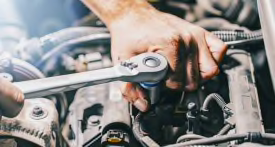2024 Hyundai Santa Fe Grows in Size and Capability
The bold new design gives this midsized SUV a more modern, upscale appearance
The midsized Hyundai Santa Fe SUV is redesigned for the 2024 model year, giving it a more muscular look and striking interior while mostly carrying over the powertrain options from the current generation Santa Fe.
This fifth-generation Santa Fe has a longer wheelbase than the 2023 model, giving more legroom to second-row passengers. While the U.S. is likely to get only the two-row version of the 2024 Hyundai Santa Fe, customers in other markets will be able to purchase one with a small third-row seat.
Two powertrains will be offered: a 2.5-liter turbocharged four-cylinder engine with an eight-speed dual-clutch automatic transmission and a 1.6-liter turbocharged four-cylinder hybrid with a six-speed automatic. Front- and all-wheel drive will probably be available, though Hyundai hasn’t made the final offerings public.
Skip Ahead
CR’s Take • Outside • Inside • What Drives It • Active Safety and Driver Assistance
CR's Take
Hyundai is making a clear push to bring the Santa Fe a bit more upmarket as a baby Palisade instead of just a larger option for those who need more space than the Tucson delivers. One way the automaker is doing this is by eliminating the weak link of the current Santa Fe: the 2.5-liter entry-level engine. Instead, Hyundai is launching the Santa Fe with a choice of either a turbo four-cylinder hybrid or a much-stronger turbo four-cylinder.
The interior is much cleaner-looking than the sea of buttons that dominates the current Santa Fe, and thankfully the automaker has done away with the awkward-to-use push-button gear selector. The current Santa Fe is very roomy, and Hyundai claims the 2024 Santa Fe will have even more second-row legroom, courtesy of an increased wheelbase length.
Like many of its competitors, Hyundai is pushing hard on the “lifestyle” front by making a big deal about the SUV’s off-road capabilities, which has translated into an aggressive, boxy styling compared with the attractive but forgettable-looking current model.
Outside
Hyundai ditched almost all the curved body panels and rounded corners of the current Santa Fe with this redesign. Instead, the 2024 Hyundai Santa Fe has a blocky design that makes it look as if it could easily pass as a twin (or distant cousin, at least) of the current Land Rover Defender or, given its pronounced wheel arches, the old Mitsubishi Endeavor and Ford Flex. Those wheel arches, normally round shapes that follow the circumference of the wheel and tire, are squared off.
The front end consists of various horizontal and vertical elements, from the H-pattern of the headlights to the slim, illuminated bar that stretches nearly the width of the SUV and connects the lighting elements while forming a larger letter H. The H theme is repeated below the hood with a body-colored element that serves as a license-plate mounting location and connects the air intakes that reside below each light.
In profile the Santa Fe’s blocky, Defender-esque styling is readily apparent, particularly in photos showing a Santa Fe equipped with a variety of off-road equipment. A single horizontal line stretches from the leading edge of the hood all the way to the tailgate, bisecting the SUV. The use of black on all of the roof pillars gives the effect of having the roof float over the windows, and highlights the slight downslope toward the rear end. Large, chunky wheel arches appear as blisters on the otherwise slab-sided body. Distinguishing design elements include a fender vent that sits above the front wheel and adjacent to the front doors (shown below), body-colored door handles, and body-colored side mirrors that are mounted on the front doors just under the tiny triangular “sail” window.
The rear hatch features the words Santa Fe stretched across the entire width of the panel. This element sits low in the hatch, just above the license plate cutout, which is bracketed by two H-shaped lighting elements for the tail and brake lights.
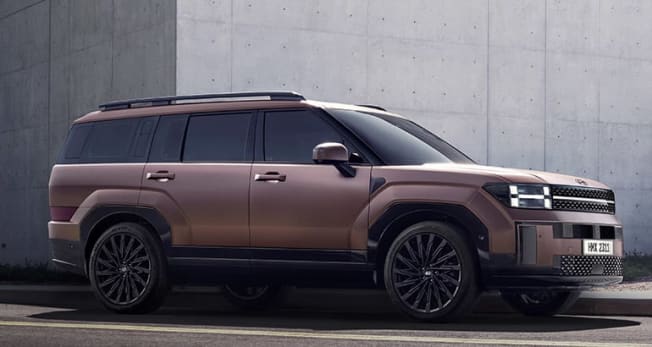
Photo: Hyundai Photo: Hyundai
Inside
Like the upcoming Hyundai Kona, the interior of the 2024 Hyundai Santa Fe has its roots in the modern minimalist design of the Hyundai Ioniq 5 and Ioniq 6 EVs—only adapted to account for the drivetrain of an internal combustion vehicle. Like the exterior, much of the interior styling is angular, with horizontal and vertical elements that join together to form the letter H—though subtly. Note that the old Hyundai logo is nowhere to be seen, replaced by the squat, wide rectangle in the center of the steering wheel.
The H motif is seen in the air vents, which run the width of the vehicle toward the bottom of the dashboard (shown below). They sit underneath a curved infotainment display screen, which consists of two 12.3-inch screens for the digital instrument cluster and the infotainment system, like what is available on the Kia Sportage. Underneath the air vents is a 6.6-inch panel with physical buttons and touch-sensitive surfaces for the infotainment and climate control system. Knobs are used for powering the infotainment system on and off, adjusting volume, and tuning, with hard buttons for jumping among some functions, such as the map, digital media, and advancing a station or music track.
The climate controls are all capacitive touch “buttons” except for the temperature controls, which are knobs (for the driver and passenger). At the bottom of the panel sit more hard buttons for drive mode selection, deactivating the engine’s auto stop/start system, parking sensors, and more.
Two USB-C outlets sit in front of two Qi wireless phone chargers. As with other Hyundai vehicles, one of the USB-C outlets can be toggled between charging only and charging while being connected to the infotainment system.
Like the Hyundai EVs and the redesigned Kona, the Santa Fe uses a version of the automaker’s new bulbous gear selector, which juts out from the bottom right side of the steering column.
Synthetic, “eco-friendly” materials are used throughout the cabin for surfaces such as the headliner, seatbacks, door trim, and seating surfaces.
According to the automaker, the Santa Fe with the conventional powertrain has greater second-row legroom, increasing from the 2023 model’s 41.7 inches to 42 inches. The hybrid’s second-row legroom has increased by about three-quarters of an inch to 41 inches.
On the technology front, a digital rearview mirror will be available, helping with aft visibility in the event that cargo is blocking the rear window. And a radar-based Rear Occupant Alert system will remind the driver to check for passengers or pets left in the rear seat after the ignition is turned off.
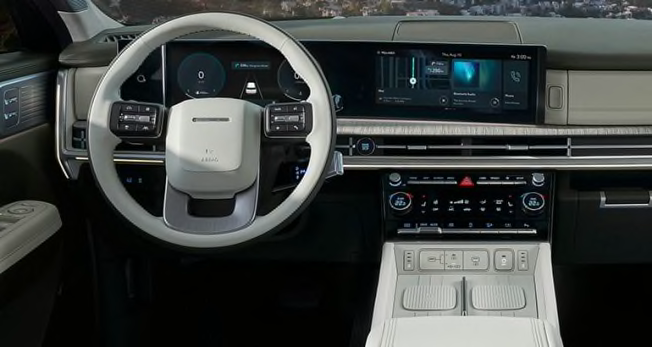
Photo: Hyundai Photo: Hyundai
What Drives It
Two different powertrains will be offered in the Santa Fe. The top-level one is a 277-hp, 2.5-liter turbocharged four-cylinder that’s paired with an eight-speed dual-clutch automatic transmission. The standard powertrain will be a 180-hp (estimated), 1.6-liter turbocharged four-cylinder hybrid mated to a conventional six-speed automatic transmission. The plug-in hybrid option has been dropped for the U.S. market. Both front- and all-wheel drive are likely to be available, though Hyundai hasn’t officially stated the drivetrain with each engine.

Photo: Hyundai Photo: Hyundai
Active Safety and Driver Assistance
The 2024 Hyundai Santa Fe will come with a variety of active safety systems, but the automaker hasn’t made it clear yet which are standard and which are optional. These include automatic emergency braking; rear cross traffic warning; reverse automatic emergency braking; a windshield-mounted camera for the lane centering assistance system, which will use steering inputs to keep the vehicle in the center of its lane; and a driver attention warning, which monitors the driver and can issue warnings if it determines if the driver isn’t paying attention.
We expect that AEB with pedestrian detection, AEB that operates at highway speeds, blind spot warning, and rear cross traffic warning will continue to be standard.
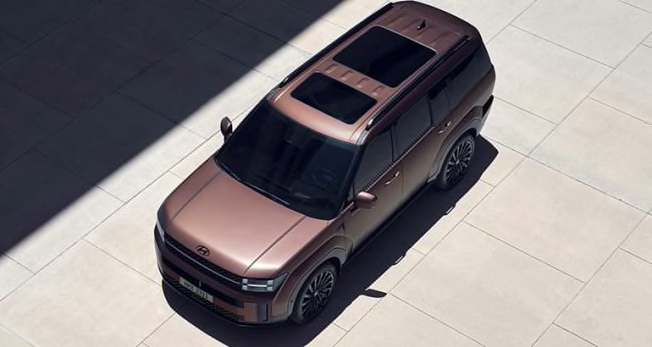
Photo: Hyundai Photo: Hyundai
